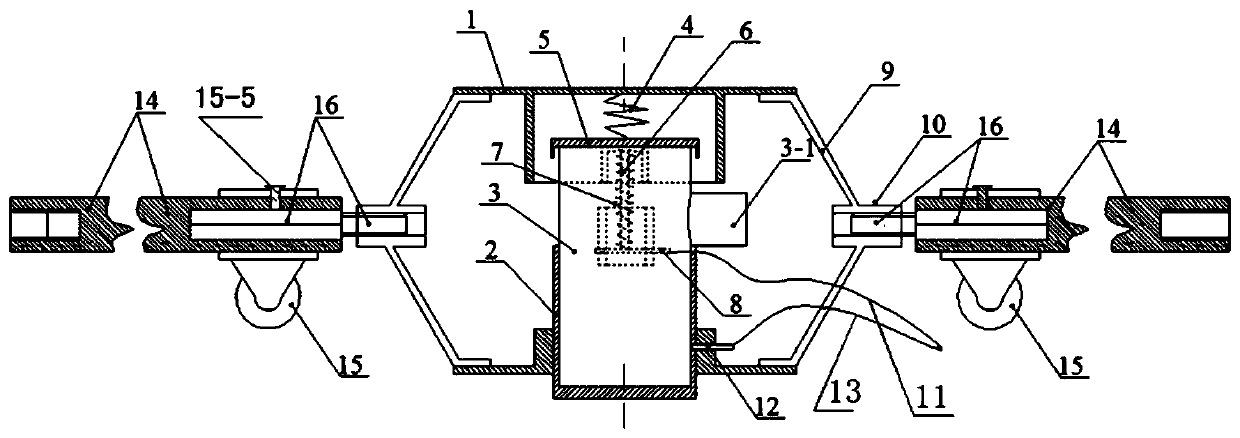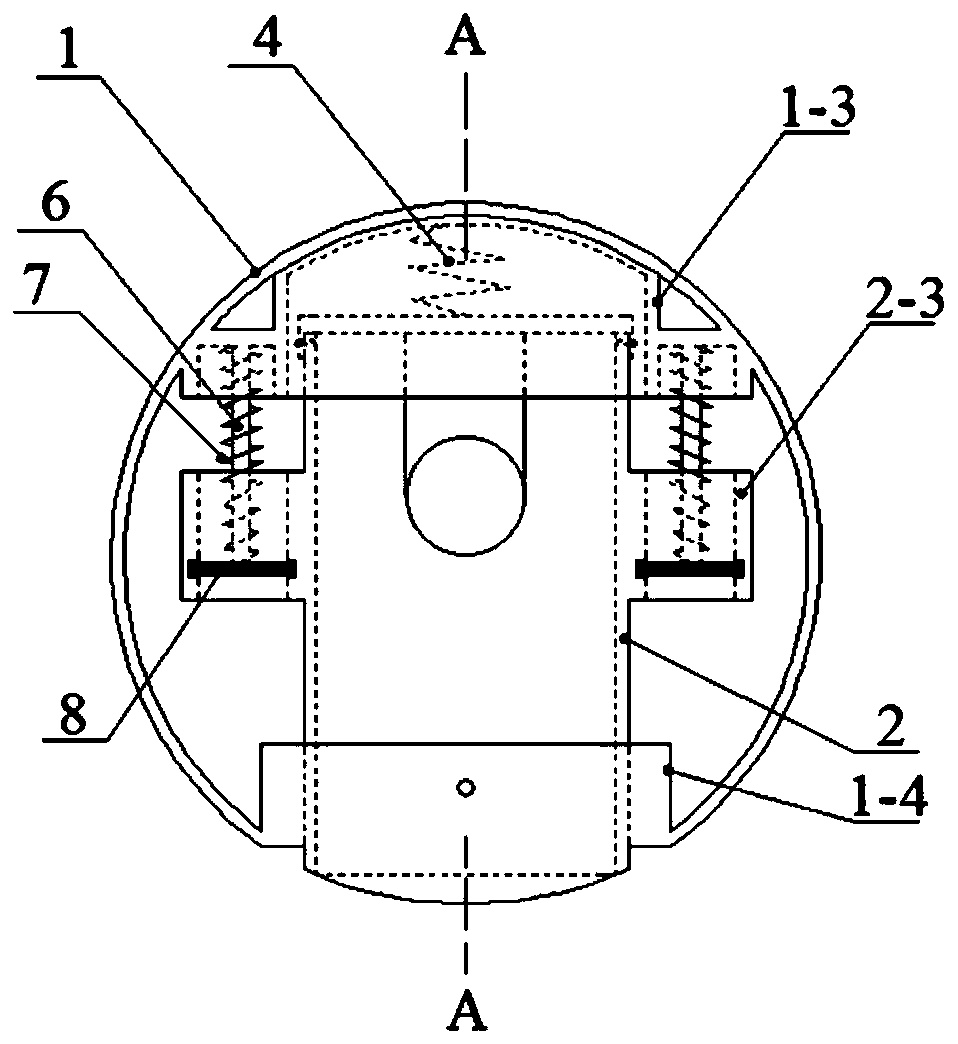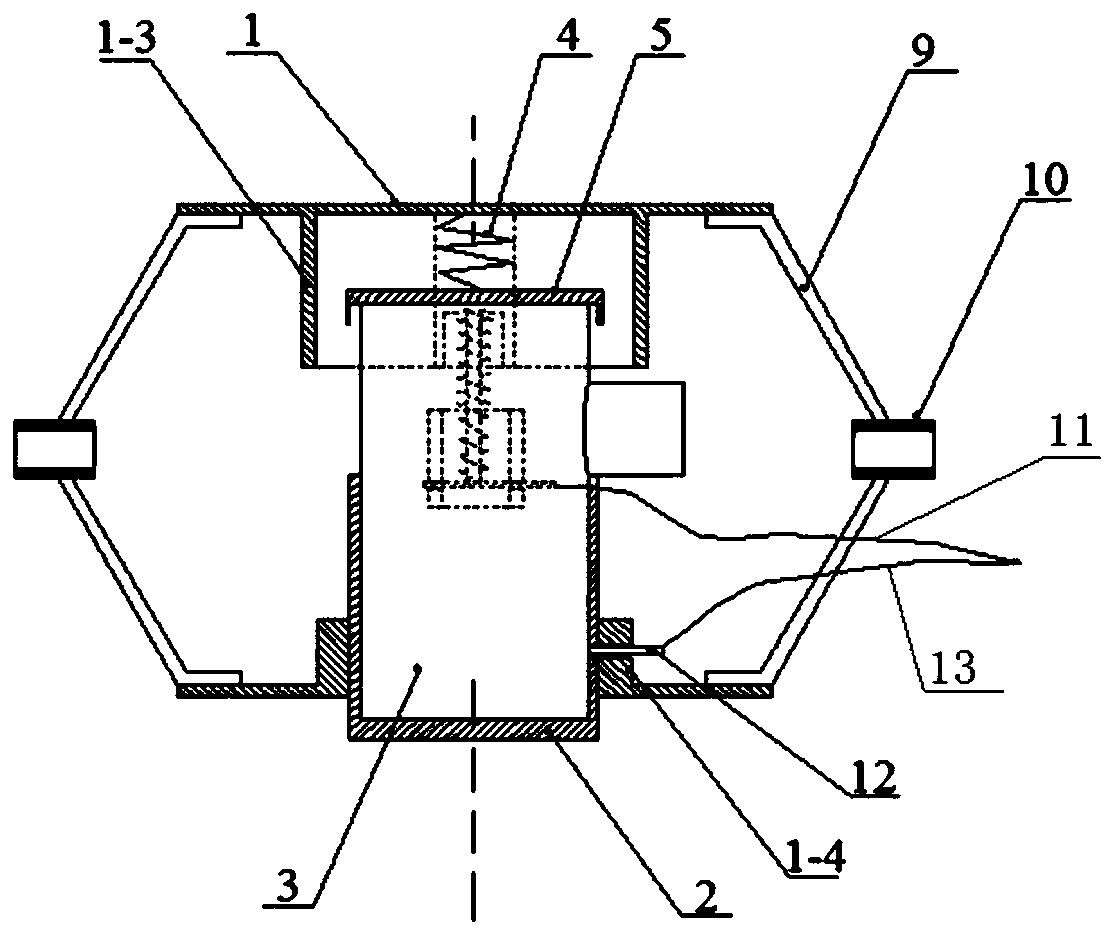[0005] (1) At the engineering site, the acoustic emission probe is directly placed in the borehole, relying on the residual
liquid medium (such as water) in the borehole as the medium for
signal transmission between the rock
mass and the acoustic emission probe, the acoustic emission probe will receive The detection
signal is transmitted to the ground
monitoring system through cables; however, this method has the following disadvantages: ① This implementation is only suitable for drilling holes with a downward direction, and for drilling holes that are completely horizontal or upward at a certain angle, it is difficult to store Even for the downward drilling, the rock
mass around the drilling still needs to be relatively intact, so as to avoid the loss or seepage of the
transmission medium from the borehole cracks, and ensure that the AE probe is always in the
transmission medium, but the actual site However, it is difficult to meet this requirement, which affects the monitoring effect; ②Although the liquid between the rock
mass and the acoustic emission probe can be used as the
coupling medium for
signal transmission, the density of the liquid is generally relatively low, and its signal transmission effect is not as good as that of the acoustic emission probe directly. The detection signal received by the
transmitter probe in effective contact with the rock wall
[0006] (2) In order to ensure effective
coupling between the acoustic emission probe placed in the borehole and the borehole wall,
cement can also be poured into the borehole at the engineering site so that the acoustic emission probe and the rock wall are poured as a whole. Although this method It can solve the problem of effective transmission of detection signals, but there are still the following defects: ①The acoustic emission probe after
casting is not recyclable, resulting in high monitoring costs; adjustment, only to re-
drill and install new acoustic emission probes, which not only leads to high monitoring costs, but also leads to
prolongation of the project progress and even delays in the construction period; The grouting effect of the installation part of the acoustic emission probe is difficult to guarantee, and there may be situations where the installation part of the acoustic emission probe cannot be effectively grouted, resulting in no effective
coupling between the acoustic emission probe and the rock wall and no monitoring signal; Deeper, the greater the total shrinkage and deformation of the poured
cement after solidification, the signal
transmission cable of the acoustic emission probe bonded to the
cement will bear tension due to the shrinkage and deformation of the cement, resulting in ineffective signal transmission; ④ During the excavation process Explosive blasting may cause the grouting surface and the rock wall surface to relax, resulting in a decrease in the effectiveness of monitoring signal transmission; ⑤The inside of the borehole is usually relatively humid, and it takes a long period for the
grout to solidify after pouring, which will prolong the construction period; and the installation The process is time-consuming and laborious, requiring a series of professional grouting equipment and grouting personnel, which further increases the cost of monitoring
[0007] (3) Another implementation method is to use a simple fixed installation device to fix the acoustic emission probe inside the device, and then use a rigid non-movable
metal transmission rod to send the fixing device to the installation site, and use pressure to push the acoustic emission probe to the top of the device. After it comes out, it is in contact with the rock wall of the borehole to achieve fixation. Its
advantage is that it realizes the contact between the acoustic emission probe and the rock wall in the case of non-grouting, but there are still the following disadvantages: The distance between the walls is very close, so the fixed installation device and the drilling hole must have a concentric structure, and the hole wall needs to be smooth, but these requirements are difficult to guarantee in actual construction; ② Due to the
large size of the fixed installation device, it is only suitable for Large drilling holes lead to higher drilling costs; ③The entire transmission rod and installation device are inserted into the drilling hole through force and rigidity, which not only has high friction, it is easy to
wear out the cable or the acoustic emission probe, and it is easy to It is stuck in the
drill hole and cannot be sent to the place where it needs to be installed; ④ Since the fixed installation device is rigidly inserted into the
drill hole through external force, the installation process is not only time-consuming and laborious, but also the work efficiency is extremely low; ⑤ Due to the The hole wall is a cylindrical surface, while the end face of the acoustic emission probe is a plane. How to ensure that the end face of the acoustic emission probe is effectively coupled with the borehole wall is also a difficult problem to be solved in practical applications
[0008] Based on the disadvantages and defects in the above-mentioned various implementation methods, the application and promotion of acoustic emission detection in the monitoring of rock (body) stability and rockburst dynamic disasters is limited to a certain extent.
[0009] Therefore, how to install the acoustic emission probe in the borehole conveniently and effectively, and how to effectively couple the installed acoustic emission probe with the hole wall is still a difficult point in
field monitoring and research at present, and there is a lack of relevant testing methods and
technical support Login to View More
Login to View More 


